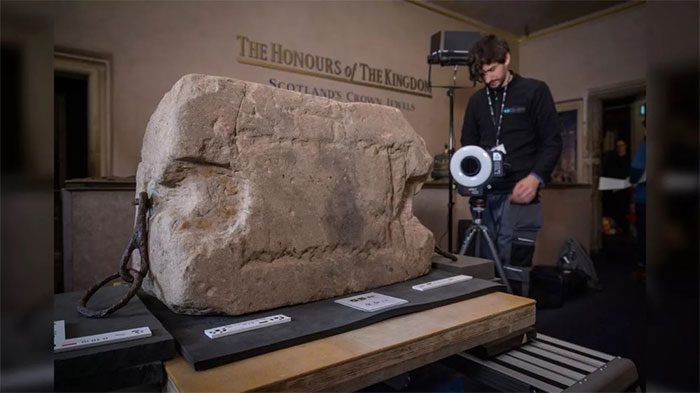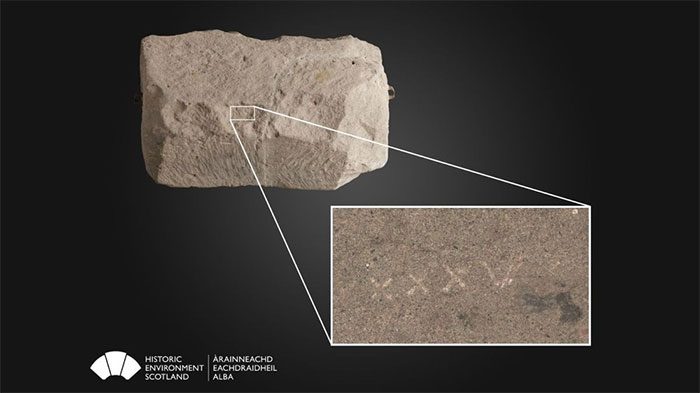The “Stone of Destiny,” a rectangular stone used in the coronation ceremonies of Scottish kings since the 13th century, will also be utilized in the coronation of the King of the United Kingdom on May 6.

A new look at the 13th-century Stone of Destiny reveals mysterious markings and other “anomalies” that had previously gone unnoticed.
When King Charles III is crowned in London on May 6, the coronation ceremony will feature the “Stone of Destiny,” a carved throne that is at least 800 years old. Despite its long history, scientists have only recently identified previously unrecorded symbols and other anomalies on the stone.
These anomalies—a bronze alloy mark and remnants of plaster—indicate that this historic stone possesses unknown aspects of its history that have not been documented in records.
Roman Numerals on the Stone

Markings resembling Roman numerals were discovered on the stone during laser scanning.
The stone has been used in the coronation of Scottish kings since the 13th century, and today, it continues to play a role in the coronation of the King of the United Kingdom. As part of modern ceremonies, the stone is placed in the coronation chair where the king sits. The stone was transported from Scotland to England in 1296 and was only returned in the 20th century. Its history prior to the 13th century remains unclear.
Now, scientists from Historic Environment Scotland, a public agency responsible for the stone, have conducted laser scans and scientific tests that reveal new information about it. Among the findings are markings that resemble Roman numerals, including three X-shaped signs followed by a mark that looks like the letter “V.”
“These Roman numerals have never been recorded before. We do not know why they were carved or what their significance is, but we hope this will be a field for further research,” said Ewan Hyslop, head of research & climate change at Historic Environment Scotland.
Ewan Campbell, a senior lecturer in archaeology at the University of Glasgow in the UK, who was not involved in this new study, suggested that the carvings might not even be Roman numerals but rather other symbols.
Campbell stated: “I think these are questionable numbers—more likely crude numerals. Based on the wear of the stone and the positioning of the markings, I suspect they were not carved into the stone until it was transferred from Scotland to England in 1296.”
Bronze or Brass Object Placed on the Stone
The research team also identified the bronze alloy mark on the stone using X-ray fluorescence (XRF) analysis, a relatively non-destructive technique that measures the chemical composition of materials such as stone, minerals, and sediments.
This discovery suggests that a bronze or brass object was placed on the stone for a period at some point in its history.
This indicates that certain objects, possibly relics such as a saint’s bell, were placed on the stone for an extended time.
Relics were very common during the Middle Ages and sometimes included remains of material, such as bones of a saint or a holy person placed in a metal box, such as one made of bronze.
Relics could also be artifacts associated with a person. For example, pieces of wood believed to be from the cross on which Jesus was crucified are popular relics.
Analysis also revealed the presence of plaster on the Stone of Destiny. This indicates that at some point, a plaster cast may have been created.
The existence of a cast is surprising, as there are no records mentioning a casting made of stone, said Sally Foster, a professor of heritage and conservation at the University of Stirling: “I have not encountered any stories or evidence that the stone was recreated in this way.”
While it remains unclear how the plaster adhered to the stone, recent scans and tests will facilitate further scholarly research on the stone.





















































